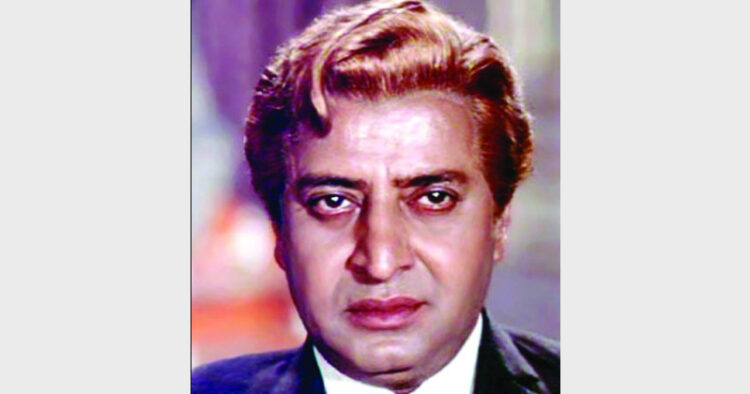The indispensible presence of songs & dance in Indian films has attracted attention, admiration and scholarly interpretations, since inception. One of the most logical and consensually acceptable explanation for this phenomena seems to be the presence of some form of music and dance in all life cycle rituals in India such as birth, marriage, festivals, worship and in some communities even death. Thus, various manifestations of this art form became the most integral, common minimum across a wide geographical, religious, ethic and culturally diverse expanse of India. As film historian Partha Chatterjee states, “the Hindi film song cut through all the language barriers in India, to engage in lively communication with the nation where more than twenty languages are spoken and … scores of dialects exist”.
Thus, the song & dance sequence was used not only to enhance the cinematic experience of the audience but also convey the finer nuances of the myriad emotions that could not be conveyed adequately in verbal form. So, what began in 1931 with Alam Ara, became a sure formula for box office success by 1950’s with lavish romantic musicals and melodramas becoming a staple diet of Indian cinegoers. It is interesting to note here that this approach was not only used by light-hearted movies like Raj Kapoor’s Awaara (1951) and Shree 420 (1955) but also hard-hitting ones like Guru Dutt’s Pyaasa (1957) and Kaagaz Ke Phool (1959), a trend kept alive even to this day with socio-politically relevant movies like Mrityudand (1997), Satya (1998), Zubeida (2000) having strong musical foundations. This trend dispels the notion that music and dance forms a core ingredient of ‘Masala Movies’ and not the ‘serious types’ usually known as Parallel Cinema or Art Cinema, though a couple of such ventures were undertaken by post-independence alternative film makers like Satyajit Ray, who discarded the song and dance motif in an effort to distinguish from mainstream cinema. But such attempts were few and far between.
By mid 70’s and early 80’s, matters came to such a pass that elaborate Song & Dance sequences became the safest and surest concoction for getting the cash registers ringing. What started as a harmless ‘interruption’ in the story line in the form of a dream sequence took more aggressive and crude forms like the present day ‘Item’ numbers meant to titillate a certain section of the masses looking solely for entertainment value in movies (the ‘paisa vasool’ syndrome). This genre, like films themselves, remains controversial – with ardent fans and harsh critics. However, even the critics are appreciative of certain film songs, which they somehow consider to be a cut above the rest, like raag-based or with powerful lyrics. Despite the fractured mandate, film songs have become a ubiquitous part of existence and public psyche with technology, especially the mobile revolution, fuelling the impetus.
With such a voracious appetite of the Indian masses, it doesn’t come as a surprise that movies have been made with Music and Dance as its central theme like Jhanak, Jhanak Payal Baje, Jal bin Machli Nrity bin Bijli, to the modern Dil to Pagal Hai, Any Body Can Dance. There are also umpteen examples of movies that have sunk without a trace but their music evergreen, drawing applause and revenue alike. Then there are examples of lead ladies who have catapulted to that position largely, if not solely, on the merits of their dancing prowess and histrionics like Vyjayanthimala, Hema Malini, Sridevi, Madhuri Dixit. Even the power-packed lead ladies have taken to this art form at some point of their career to amazing results like Meena Kumari in Pakeeza, Waheeda Rehman in Guide, Rekha in Umrao Jaan. Some male stars owe their star status to their ability to shake their booty to audience raptures like Mithun Chakraborthy, Jeetendra, Hritik Roshan, Shahid Kapoor. Singers like KL Saigal, Suraiyya, Noor Jehan, Geeta Dutt, Mangeshkar Sisters (Lata & Asha) Mukesh, Mohammed Rafi, Kishore Kumar have been stars in their own right as were the music directors like Naushad, Khayyam, Senior & Junior Burman, lyricists like Majrooh Sultanpuri, Sahir Ludhyanvi, Gulzar and Javed Akhtar to name a few. Character artists like Helen & Nadira, who specialized in negative roles made dance forms like cabaret and mujras into a fine art that the current breed of ‘item specialists’ dream of emulating. Such was the appeal of music in movies.
Though the trend was intiated in the 1970s by avant garde composer R. D Burman, globalisation saw a greater exchange of various musical genres, sounds and instruments from different parts of the world into the Indian mainstream leading to an eclectic blend of contemporary fusion music. Not only did global music inspire Indian Film Music but there were ample cases of vice-versa as well. Bollywood began influencing musical films in the Western world, and played a particularly instrumental role in the revival of the American musical film genre. Baz Luhrmann stated that his musical film Moulin Rouge! (2001) was directly inspired by Bollywood musicals. Composers like A. R. Rahman, rendered music for celebrated names like Andrew Lloyd Webber (Bombay Dreams) and Danny Boyle (Slumdog Millionaire).
Notwithstanding the accusations of being a figment of an infantile/ unrealistic culture that needed to ‘grow up’ or/and ‘get real’, music and dance have become the ‘Unique Differentiator’ of Indian movies. To conclude, Bollywood & all its regional variants, have played to the musically inclined Indian soul attuned to a rich amalgam of Shringaar Ras and Bhakti Ras and everything in between, gaining global acceptability and appreciation in the bargain.
—PenQueen














Comments